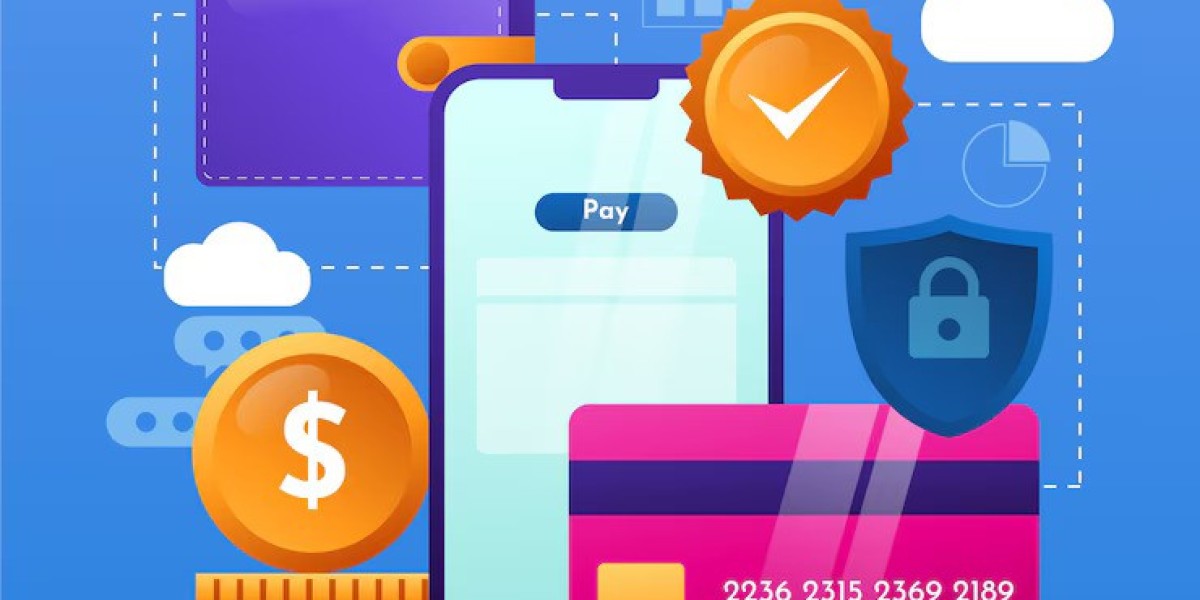In today's digital age, businesses are increasingly relying on online transactions to serve their customers. Whether you're running an e-commerce store, a subscription-based service, or a marketplace, enabling secure and efficient payments is crucial. That's where a payment gateway comes into play. But what does it take to create a payment gateway from scratch? In this blog, we'll walk through the key steps involved and the technologies you need to consider.
What is a Payment Gateway?
Before diving into how to create a payment gateway, it's essential to understand what a payment gateway is. A payment gateway is a technology that facilitates the transfer of transaction data between a customer's bank (issuing bank) and the merchant's bank (acquiring bank). It ensures that sensitive information, like credit card numbers, is encrypted and secure during online transactions. A payment gateway can be integrated into websites, apps, and even point-of-sale systems.
Key Features of a Payment Gateway
When building a payment gateway, there are several important features that it must possess:
- Security: Payment gateways must comply with Payment Card Industry Data Security Standard (PCI DSS) regulations to ensure data protection.
- Authorization: The gateway verifies the customer's payment information and ensures sufficient funds are available.
- Settlement: After the payment is authorized, the gateway transfers the funds to the merchant's account.
- Fraud Detection: Real-time fraud monitoring tools must be in place to prevent unauthorized transactions.
- Multi-Currency Support: If you plan to serve international markets, your gateway must support multiple currencies.
- Reporting and Analytics: Offering businesses detailed transaction reports and Insights is a crucial feature for any payment gateway.
Steps to Create a Payment Gateway
1. Understand the Legal Requirements
When you set out to create a payment gateway , the first and most important step is to comply with all legal and regulatory requirements. Payment gateways handle sensitive financial data, so they are subject to strict regulations. The Payment Card Industry Data Security Standard (PCI DSS) is a key regulation that every payment gateway must comply with to ensure data security.
You'll also need to work with acquiring banks, card networks (like Visa, Mastercard, etc.), and follow local regulations concerning financial transactions in your country.
2. Choose the Right Technology Stack
Choosing the appropriate technology stack is vital to the success of your payment gateway. Here are some components you will need:
- Programming Languages: Popular languages for developing payment gateways include Java, PHP, Python, and Ruby. These languages are known for their scalability and security features.
- Databases: Your payment gateway will handle massive amounts of transaction data, so choosing the right database is crucial. SQL Databases like MySQL or NoSQL options like MongoDB can serve this purpose.
- Encryption Standards: Implement robust encryption protocols, such as TLS (Transport Layer Security), to protect sensitive data.
- Tokenization: This process replaces sensitive data with unique identifiers (tokens) to minimize the risk of a security breach.
3. Integrate Payment Methods
To appeal to a wider audience, your payment gateway should support various payment methods. In addition to traditional credit and debit card payments, you should integrate:
- Digital Wallets: Apple Pay, Google Pay, and PayPal are popular options.
- Cryptocurrency: As digital currencies grow in popularity, providing support for Bitcoin and other cryptocurrencies can give your business a competitive edge.
- Bank Transfers: Allowing direct bank transfers offers customers a secure and familiar payment option.
4. Develop the Payment Processing Workflow
When you create a payment gateway, developing a seamless payment workflow is essential. Here's what the basic Workflow looks like:
- Customer Initiates Payment: The customer enters their payment details on the website or app.
- Data Encryption: The payment data is encrypted to prevent unauthorized access.
- Payment Authorization: The payment gateway sends the data to the acquiring bank, which forwards it to the card network (Visa, Mastercard, etc.).
- Approval or Decline: The issuing bank either approves or declines the transaction based on available funds and security checks.
- Transaction Completion: If the payment is approved, the funds are transferred to the merchant's account, and the customer is notified.
5. Implement Security Measures
Security is paramount when you create a payment gateway. Apart from complying with PCI DSS regulations, you should also integrate fraud detection systems. Machine learning algorithms can be used to detect unusual transaction patterns that could indicate fraudulent activity. Two-factor authentication (2FA) and biometric authentication (fingerprint or facial recognition) can also be implemented for an added layer of security.
6. Test the Payment Gateway
Before going live, thoroughly test your payment gateway to ensure that it is functioning correctly. You should conduct both manual and automated testing for:
- Usability: Ensure that users can easily make payments without confusion or delays.
- Security: Test for vulnerabilities that could be exploited by attackers.
- Compatibility: Make sure your gateway works across different browsers, devices, and payment methods.
- Load Testing: Simulate high transaction volumes to test how well your gateway performs under stress.
7. Go Live and Continuously Improve
Once you're confident that your payment gateway is secure and functional, it's time to go live. However, the work doesn't stop there. Continuously monitor your payment gateway's performance and update it to meet evolving security standards and customer expectations.
Conclusion
Building a payment gateway from the ground up is a complex but rewarding process. By following these steps and focusing on security, efficiency, and user experience, you can create a payment gateway that offers seamless and secure transactions for your customers. Always remember that the landscape of online payments is constantly evolving, so staying up-to-date with technological advances and regulatory changes is key to maintaining a reliable and secure gateway.
If you're looking for expert advice or assistance in building a custom payment gateway, many specialized software development companies can help you navigate the challenges and ensure a smooth integration into your business.








